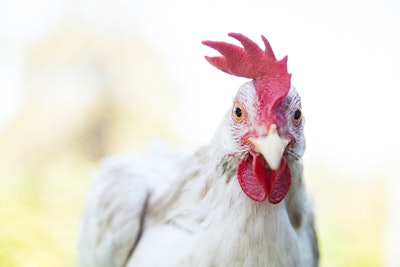
A novel platform for profiling tissue and immune-based cell responses uses the growing feather to analyze and measure the effectiveness of potential poultry health strategies.
“Infectious diseases represent around one-third of the issues faced by the poultry industry. Fundamental knowledge regarding events leading to an effective immune response and memory development in poultry is lacking,” Gage Greening, Chief Technology Officer, Nanomatronix LLC, said during the Virtual Poultry Tech Summit 2020.
The technology “is a novel in vivo cutaneous test that uses the growing feather as a platform to analyze tissue and cell response to test materials,” he explained.
Current tests focus on measuring antibodies to acquire information about the immune system. However, antibodies do not provide data about cell-mediated immunity (T cells) which is important for B cell function and production of antibodies.
How it works
This approach “involves interdermal injection of test materials into a chicken’s growing feathers” and “will address the lack of methodology for analyzing the complete time course of the innate and adapted cellular and tissue immune response from initiation to resolution within a single individual following the injection of test materials,” Greening said.
In poultry, the living portion of a feather is a column of skin around 10 mm of height and 2-3 mm in diameter. It consists of an inner dermis enveloped by an epidermal layer and connective tissue sheath. The vascular supply runs through the dermis, allowing for recruitment of soluble factors and leukocytes from circulation.
“The primary innovation is the use of the avian growing feather,” said Greening.
“Each growing feather pulp constitutes a distinct layer of tissue and can therefore be considered an in vivo test tube. In other words, there is no cross-reactivity between neighboring feathers.”
The technique can be used for multiple applications, including vaccine development, vaccine operations and diet immunomodulators. Up to 24 growing feathers in a single animal can be tested at one time.
For example, when used to test a new vaccine, researchers inject the test material directly into the growing feathers of vaccinated birds. These feathers can be plucked and analyzed at varying times to measure the effectiveness of the new treatment against the material.
Injected materials can include viral and bacterial pathogens, vaccine antigens, adjuvants, nanomaterials, chemicals and other materials.
Attend the 2021 Poultry Tech Summit
Join an exclusive international gathering of industry-changing innovators, researchers, entrepreneurs, technology experts, investors and leading poultry producers at the 2021 edition of Poultry Tech Summit on October 31 - November 2 in Atlanta, Georgia. Attendees can expect the same groundbreaking innovation and insightful presentations that made the previous events well-attended with deep dialogue on new prospective solutions and developing technologies.
Like what you just read? Sign up now for free to receive the Poultry Future Newsletter.
















